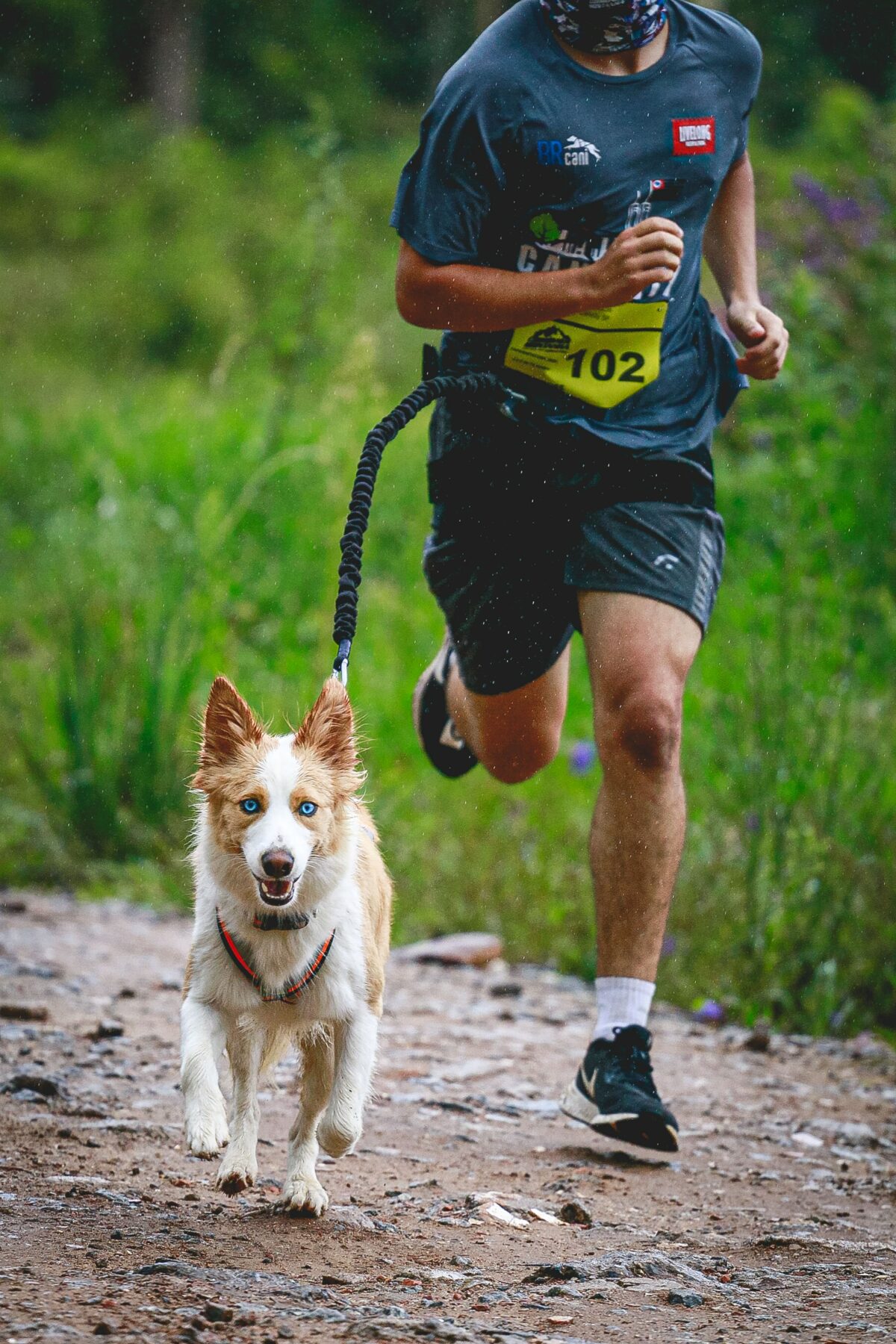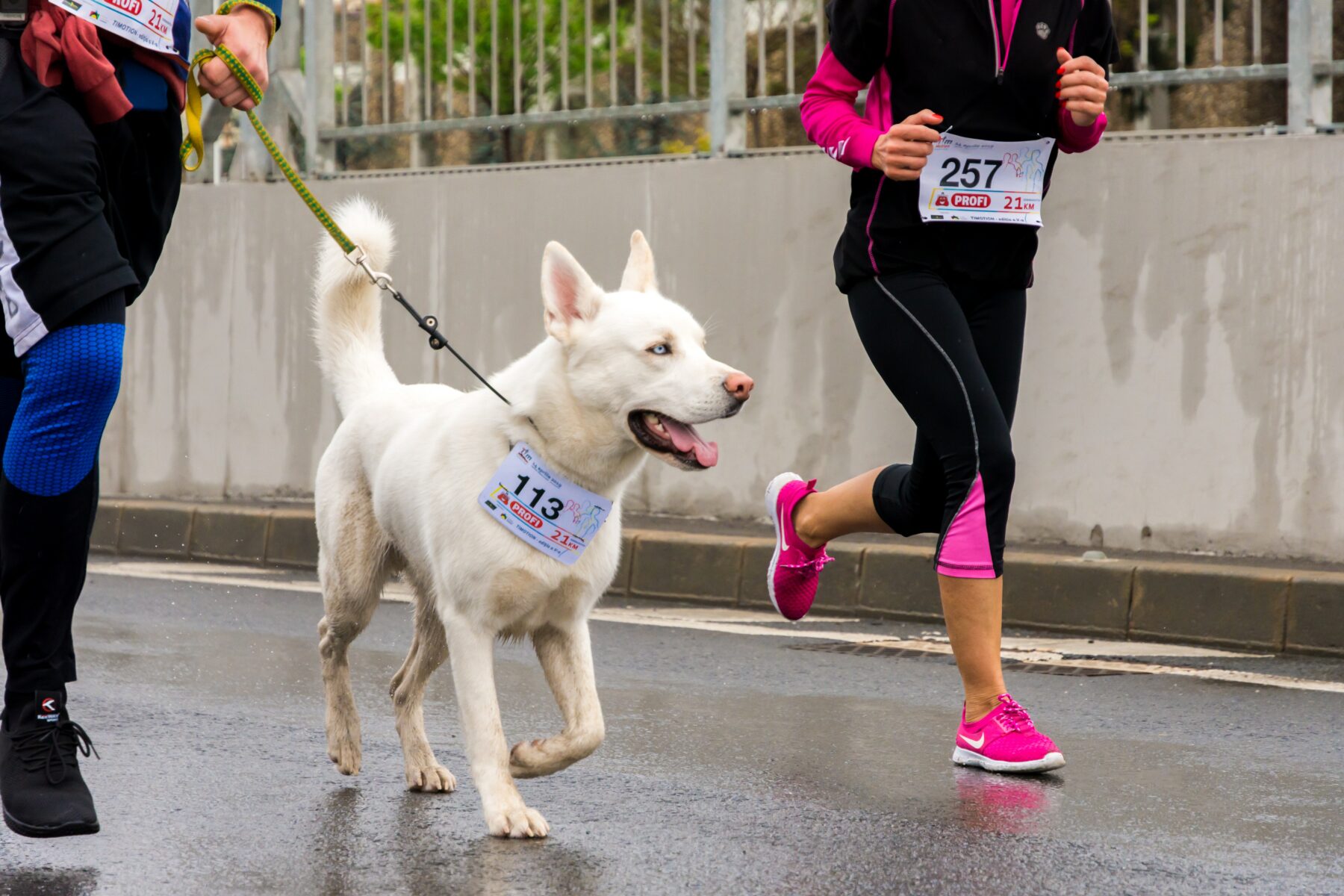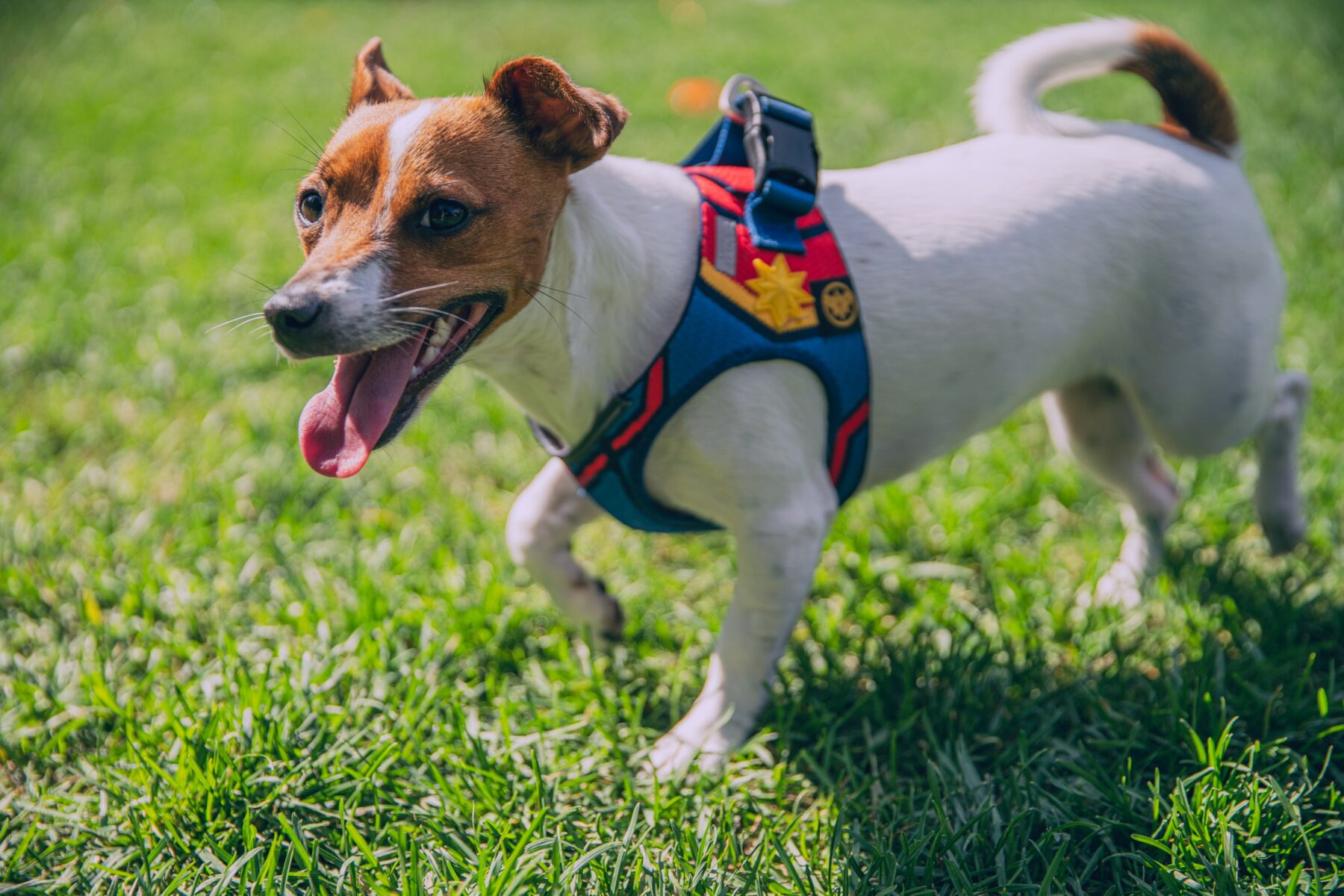6 Tips for Running With Your Pup

Owning a dog is a marvelous way to get more exercise. They’ll need you to walk them every day and can become a valued partner in all types of sporting activities. If you’re a runner, you’ll naturally want to take your pup with you. Before you bring them along though, make sure you adhere to these simple but very important tips.
Tip #1: Make Sure You Own a Running Breed
Not all dogs are suitable running mates. For example, all herding dogs will be great companions, while most lap dogs simply don’t have the build and the stamina.
A dog’s size is not as important as the length of its legs and its overall build. You also don’t want to run with a puppy. While training them young is certainly important, you need to wait until they know all the right commands and can be trusted to obey them 100% of the time.
Ask your veterinarian or do a bit of online research before you decide whether or not your dog is a running breed.
Tip #2: Don’t Run at Your Usual Pace

Before you start running with your dog, you need to walk with them. Pacing is very important. Start slowly and practice running at the same pace. Learn how long their lead needs to be and how much slack you can leave in it.
Your dog will be confused at first, so only speed up when they’ve mastered the previous step. They may be extremely excited to run and want to sprint off as soon as you pick up speed. Make sure to prevent them from taking the lead.
Tip #3: Teach Them the Right Commands
Don’t even think about running with your dog until it understands basic commands. Practice heeling, dropping, leaving and emergency recall.
You’ll meet a lot of other dogs on your run, and there will also be foods your dog may be interested in trying. Unless you’re certain they’ll drop whatever it is they’ve picked up and come running when you call them, don’t go on runs together, especially not without a lead.
Tip #4: Don’t Push Them Too Hard
Most dogs tend to be overly enthusiastic on their first runs and will have no idea how to pace themselves. They’ll start sprinting and tire themselves out too soon more often than not, especially if they’re young and energetic.
If you notice your running buddy is getting tired or needs to slow down, give them some time. It may mess up your running targets, which is why you may want to consider going on solo runs, too, until your pup gets used to the demands of the activity.
Tip #5: Have the Right Equipment

Don’t go running with a collar and your regular dog lead. Get your dog a harness that won’t restrict any of their movement and a lead that gives you more control. You can, of course, run without the lead but only when you’re certain your dog will come when called, no matter what.
You can also look into other dog-related running gear, such as a hands-free lead or dog boots and a raincoat if you’re tackling tougher terrain.
Tip #6: Don’t Forget About Their Needs
Finally, don’t forget that your dog needs to warm up and cool down, too. While they may not be able to do any stretches, you need to provide a walk at the start and finish of every run. Bring a water bowl for them on every run, and consider their meal times, as well.
If your dog spends a lot of energy on your runs, you need to ensure they’re getting enough nutrients. Stay alert for injuries and signs of exertion, and be mindful of their stamina and endurance as much as you are of your own.
Wrapping It Up
Running with a dog can be an amazing fitness activity, as long as you choose your routes carefully and are mindful of your running buddy’s needs. Stay safe, choose roads you’re familiar with and enjoy the pure joy dogs feel when running with their owners.
About the Author

Julia Robson is the mother to two girls and two Chocolate Labradors. She’s a runner and a bit of a yogi, and her pups run with her every weekend. You can read more of her work at DogsPlanet.






